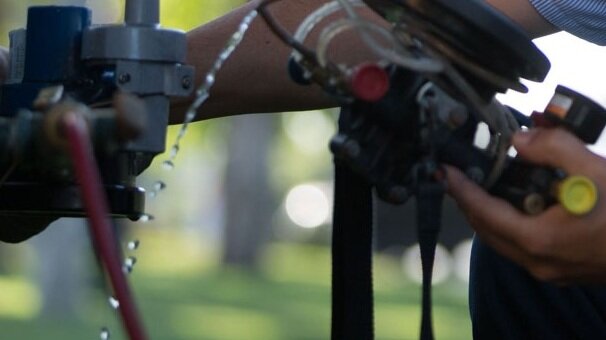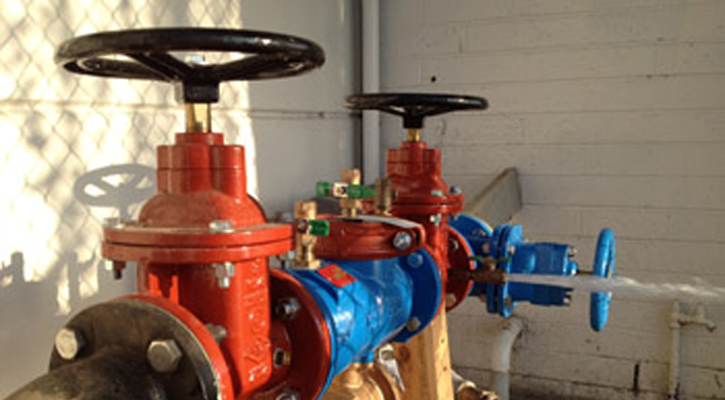Need I Inspect My Water for Backflow?
Need I Inspect My Water for Backflow?
Blog Article
Almost everyone seems to have their own individual theory when it comes to Is backflow testing necessary?.

Yes, you need to backflow test your house's water to make certain that the water is devoid of toxic substances as well as unsafe degrees of chemicals. Due to the tools needed and room for mistake, you need to not try to execute heartburn screening on your own. We advise that you call an expert plumber every number of years to test your water.
Heartburn Can Impact Both You and Your City
Numerous cities develop heartburn standards since unsafe backflow can influence the general public water system along with a single structure. Contemporary cities have backflow gadgets in location that safeguard the water supply that comes from a lot of houses and business residential or commercial properties. The genuine danger comes from irrigation systems, which can harm the water with toxic fertilizers, manure, and various other chemicals.
What Triggers Backflow?
A regular reason of backflow is a loss of water pressure that causes the water to siphon back into the water supply. After some time, there is a loss in water pressure and also the tube starts to suck the water back into the water supply. As you can picture, there are currently chemicals from the paint that are going into the water supply, potentially posturing a threat.
Heartburn Screening is Required by Regulation in Certain Cities
Depending on where you live, you could in fact be required by legislation to backflow examination your regulation. Iowa City keeps a record of all buildings offered by the city's water supply. The city needs that specific "high-hazard" centers undergo backflow testing. In some cases, homes such as residences and apartment buildings are affected.
You Can Protect Against Heartburn
If you have an expert plumber mount a heartburn device, unsafe heartburn is quickly avoidable. The plumber will likewise evaluate for heartburn and identify if there is an energetic danger. The primary purpose of a heartburn tool is to prevent water from streaming in reverse into your water system. Plumbing professionals install the device on the pipelines in your home to guarantee that the water just flows in the right instructions.
What is Heartburn?
Simply put, backflow is when water moves upwards-- the opposite instructions in the plumbing system. This is additionally referred to as "backpressure." When the water relocates this instructions, it can blend with harmful contaminants and also present a danger.
Call a Plumber to Test for Heartburn Prior To It is Too Late
A plumbing firm can swiftly check your residence's water to figure out if there are any type of harmful chemical degrees. And also if you do find that your water has high degrees of toxic substances, a plumber can conveniently set up a backflow avoidance device.
Yes, you need to backflow examination your house's water supply to make certain that the water is complimentary of toxic substances as well as unsafe degrees of chemicals. Lots of cities establish backflow standards since harmful backflow can impact the public water supply in addition to a solitary structure. A regular reason of heartburn is a loss of water stress that creates the water to siphon back into the water supply. After some time, there is a loss in water stress and the hose begins to suck the water back into the water supply. The major function of a heartburn device is to prevent water from flowing in reverse right into your water supply.
WHY DOES BACKFLOW TESTING NEED TO BE DONE EVERY YEAR
What Is Backflow?
Toxic gas backing up into a building is one example of potential backflow issues, but backflow can occur in many other ways.
Backflow is generally referred to as the reversal of a liquid or gas in a plumbing system.
Most issues for the public occur with backflow resulting in contaminated drinking water. If you look up backflow issues online you’ll probably find references to “potable” water. That means drinking water.
There have been backflow issues in the past with drinking water. Chemicals, sewage and other contaminants have found their way into drinking water causing health issues for those that count on the fresh water.
What Causes Backflow?
In a residence or commercial building water generally flows one way. This normal flow is usually driven by consistent pressure in the water and waste system.
Anything that changes the normal pressure in the system can lead to backflow.
Fire hydrant use or malfunction can reverse the normal pressure in the system on a city line, but backflow can occur in a number of different ways.
Sometimes backpressure might be caused by someone using a garden hose and submerging the end of the hose in a pool of liquid. If pressure is lost the flow could reverse and contaminants could be released into the drinking water.
Anytime there is a connection between contaminants and the drinking water there is potential for a backflow issue. Sometimes these connections are not immediately obvious like the garden hose connecting to a building’s drinking water supply.
Backflow Regulations
The Environmental Protection Agency (EPA) provides guidelines and regulations for state and local governments regarding backflow. State and local governments also have their own guidelines and regulations for backflow prevention.
Arizona has its own backflow regulations.
Due to issues with backflow in the past, regulations require backflow preventer devices to be used in nearly all residential and commercial buildings.
A backflow preventer is a device that prevents backflow as cross-connection points where potential backflow issues may occur.
While backflow is not a common occurrence, preventers are in place to make sure there is no contamination should something malfunction or go wrong with a building’s water supply.

I discovered that blog entry about Backflow Assembly Testing when browsing on the search engines. Enjoyed our post? Please share it. Help other people discover it. We love reading our article about Backflow Testing.
Hire A Pro
Report this page